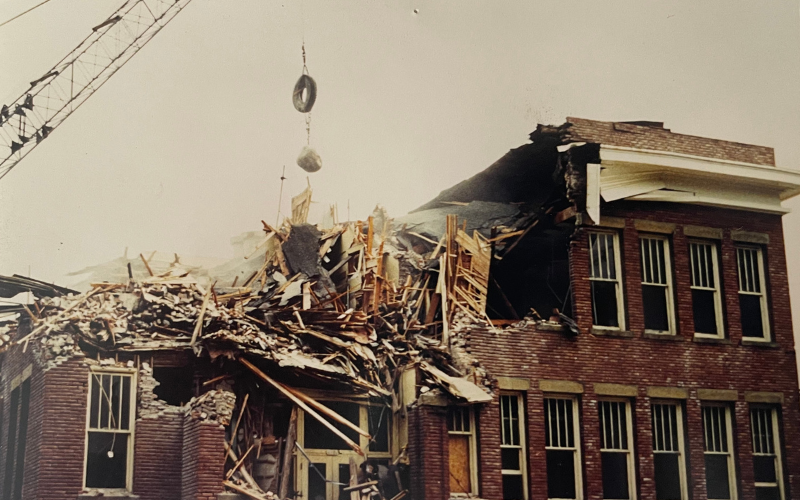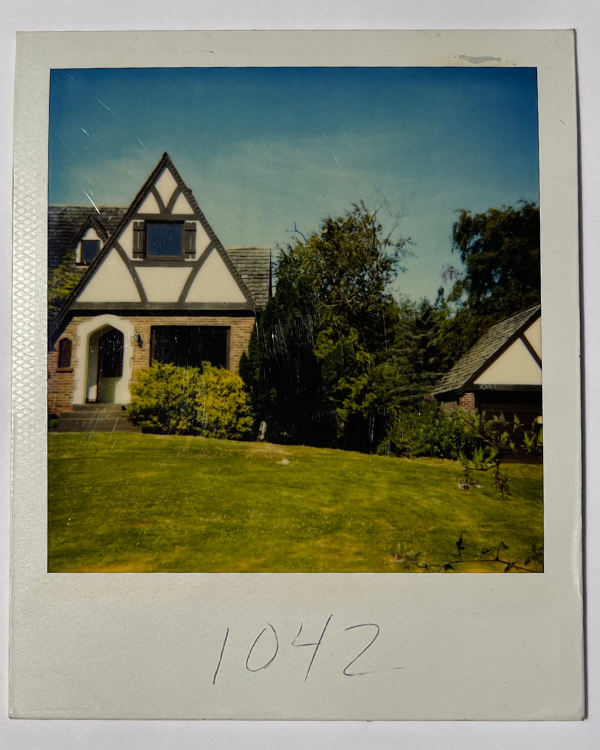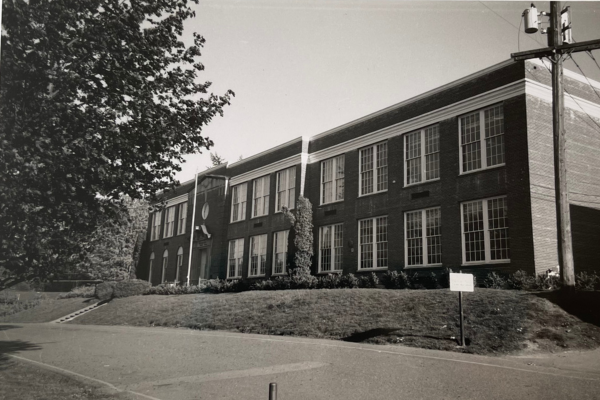
Chapter 4: Early Salvage Projects (1995-1997)
By: David Spangler
When I started working at The RE Store in January 1995, I was twenty-six years old and inexperienced in the construction trades. But I quickly learned a great deal working in the field. We all did. I don’t think anybody of the original staff had much of a background in construction aside from Bruce, who stepped away from contracting to manage The RE Store. Although our strengths and experiences varied, like architecture, environmental science, food industry, intentional communities, art, horticulture, music, and retail, we still had one thing in common: We were all now part of the ever-evolving RE Store as it cut its teeth on each of its projects, small or large. But everything is relative; even the big projects were small compared to the incredible, colossal salvage projects and house deconstruction jobs that would come after 1997. And as the number of staff grew and the faces changed over the years, the learning never stopped—even for the seasoned folks among us.

Our smaller jobs, just like today, varied greatly and involved materials like kitchens, siding, or removing metal roofing from old farm outbuildings. Sometimes it was stripping rooms of cedar tongue and groove paneling, hard or softwood flooring, or the entire interior of a house. And there was always the occasional oddball job like driving inside the mall to dismantle a kiosk (see Chapter 3: Wheels and Uniforms). We removed hundreds of windows and doors and miles of trim. Other times it was taking down a fence or dismantling a deck—so many materials saved it’s impossible to list them all.
I missed out on all the fieldwork in 1993 and 1994, most notably Silver Beach Elementary School (see photo above) and some of the proud brick and stucco estates of the roaring 1920s and 1950s track houses beneath the expanding airport flight zone. I would have volunteered to participate in those projects if I had known. Nor did I get to salvage the Whidbey Island Naval Air Station job (‘95), which filled our store with truckloads of enormous, tall metal barracks closets and desks; the sketchy, rotten hell-hole of the old Harmony School (demolished), its damp rooms and halls choked with guano-covered hollow core doors; or WWU’s Haggard Hall (‘95 or ‘96), which provided us with a treasure trove of durable mid-20th century, oak science cabinetry. My part was on the receiving end of those three projects, making room in the store or loading the items onto customers’ trucks.

—Photo from RE Store archives
I did, however, get to play a role in many other RE Store salvage highlights of the mid-1990s. Below are my recollections of a few of those endeavors.
Future Amtrak Station, Bellingham, WA
In My RE Store Memories, Chapter 1, I wrote about the moment I fell in love with not only a job but an industry and its people. That was in January 1995, when I volunteered to help salvage a Fairhaven building about to be renovated into the new Amtrak station. When I arrived at the site, I was wearing brand-new steel-toed boots, stiff, new Carhartts, and floppy fabric gardening gloves—you know—like the kind Mickey Mouse wears.
We removed many heavy doors in their jambs, hundreds of feet of trim, and other items. Wrangling the heavy doors was new to me and required muscles I did not yet possess. However, I learned fast how to safely and swiftly move these doors down and out to the truck upon my shoulder. Off of a large room on the main floor was a bright vault-like room. It had tremendously thick walls lined on all three sides with 20” wide Douglas fir shelving almost to the ceiling. It was so easy to remove Dave Bennink, and I chuckled. In contrast with doors and cabinets, that shelving was such valuable material for so little effort!
On the debris-littered carpet next to our toolboxes, a little AM/FM radio filled the silence between our clangs and bangs. As I passed by with trim and doors, I heard two classic 90’s songs—Beck’s Loser (I had no idea who Beck was yet) and the Beastie Boys’ What’Cha Want. These nearly stopped me in my tracks. Once I graduated from high school in 1987, I dismissed the Beastie Boys as an immature, writhing pile of drunk punks marinated in beer, so that refreshing single of theirs was a revelation to me. Even today, those two songs remind me of my first day working for The RE Store.
Since the Amtrak station’s conversion, the exterior of the building has mostly stayed the same. There are a few exceptions, like the parking lot where we loaded our truck is now the southwestern courtyard near the enormous old tree. But on the inside, it is impossible to reconcile today’s interior with what it was back then. Windows are in the same places, but the grand staircase to the second story is gone, having once ascended from the main floor in the middle of today’s waiting room and ticket counter. I believe part of the old vault is now the vending machine alcove in the station’s lobby today. But these changes don’t matter. Every time I rove about the lobby waiting for a southbound train, I feel my experiences and enthusiasm of that first day winking at me from every corner. No surprise there. I have always been fascinated with objects, places, and time and the possibility that our energy and past movements, in some immeasurable way, just might be metaphysically entombed in the world around us. With that in mind, I suppose that building and I will always have a secret history that no other waiting passengers will ever know.
Fairhaven Middle School, Bellingham, WA
Shortly after the Amtrak station project, I remember a crew of us extracting items from both floors of the east end of Fairhaven Middle School, built in 1937.
When we arrived, it was an intense situation compared to the solitude of salvaging the future Amtrak station alone. It was also my first experience with a large construction site. There was an intimidating amount of noise, dust, and grumpy, tobacco-spittin’’ sub-contractors on tense, overlapping deadlines doing all sorts of mysterious things. Debris and extension cords were everywhere underfoot, some of them our own. We tried to stay out of the way as we hauled heavy items down the stairs and out to our trucks, several times dodging a roving heavy-equipment Bobcat smashing aside banks of metal lockers.

When Bruce sent us to the site that morning, he mentioned that “Steve and Frank” would arrive later to help. Indeed, “Steve,” a RE Store ally and gray-haired carpenter, showed up to help us in his big old Ford pickup with a homemade jet plane hood ornament. But that Frank person never arrived. When I later asked what happened to Frank, I learned there was no Frank, just Stephen, whose last name was Frank. While this gave me a good chuckle, I always felt cheated in meeting Frank, a fabrication of my mind who never bothered to show up. I have wondered what kind of personality they might have had. I guess I’ll never get to know. We sure could have used their help. On the other hand, Steve helped us not just once but several times over the years.
Shortly after our salvage, demolishers razed that two-storied section, and the site was paved for the school’s new east-side parking lot that is there today. I was happy to discover that during the remodel, the original ogee-styled pediment over the main entrance (seen in the photo above) and ornate steel entrance railings were carefully removed and placed on a concrete pad in the front lawn. Next to them, a historical plaque was mounted, commemorating the original design of the school, and the school’s predecessor, Fairhaven High School, which burned in the mid-1930s.
